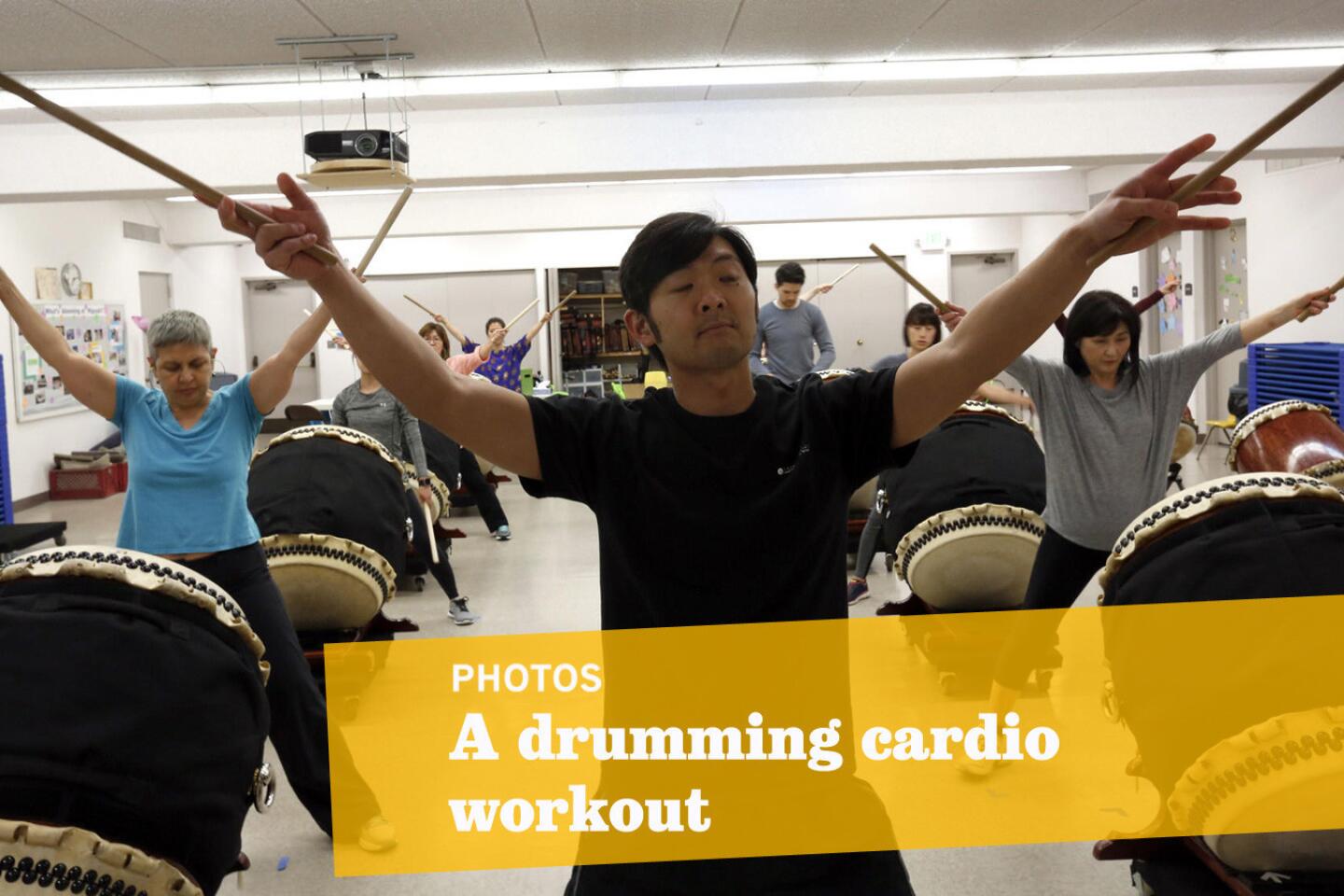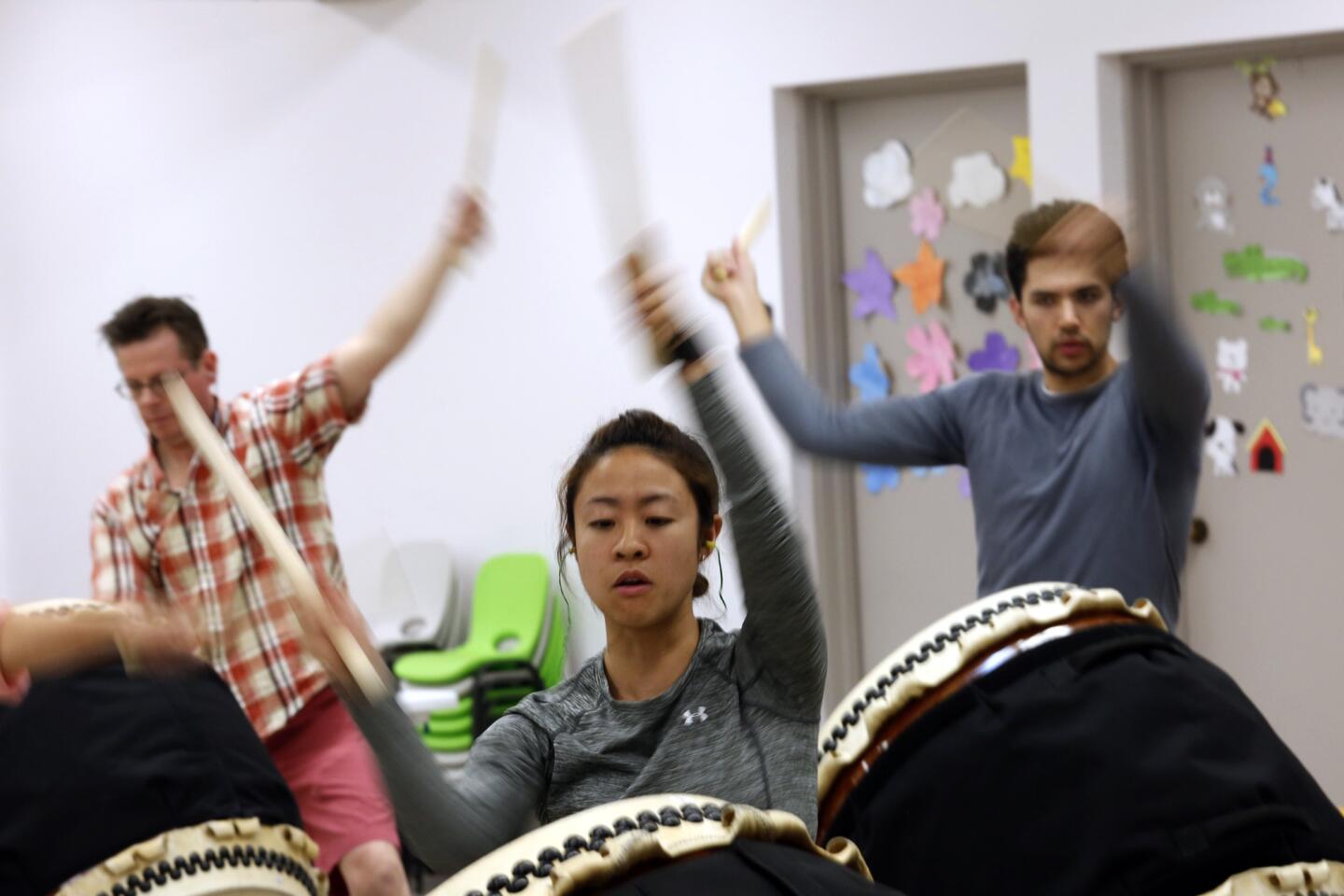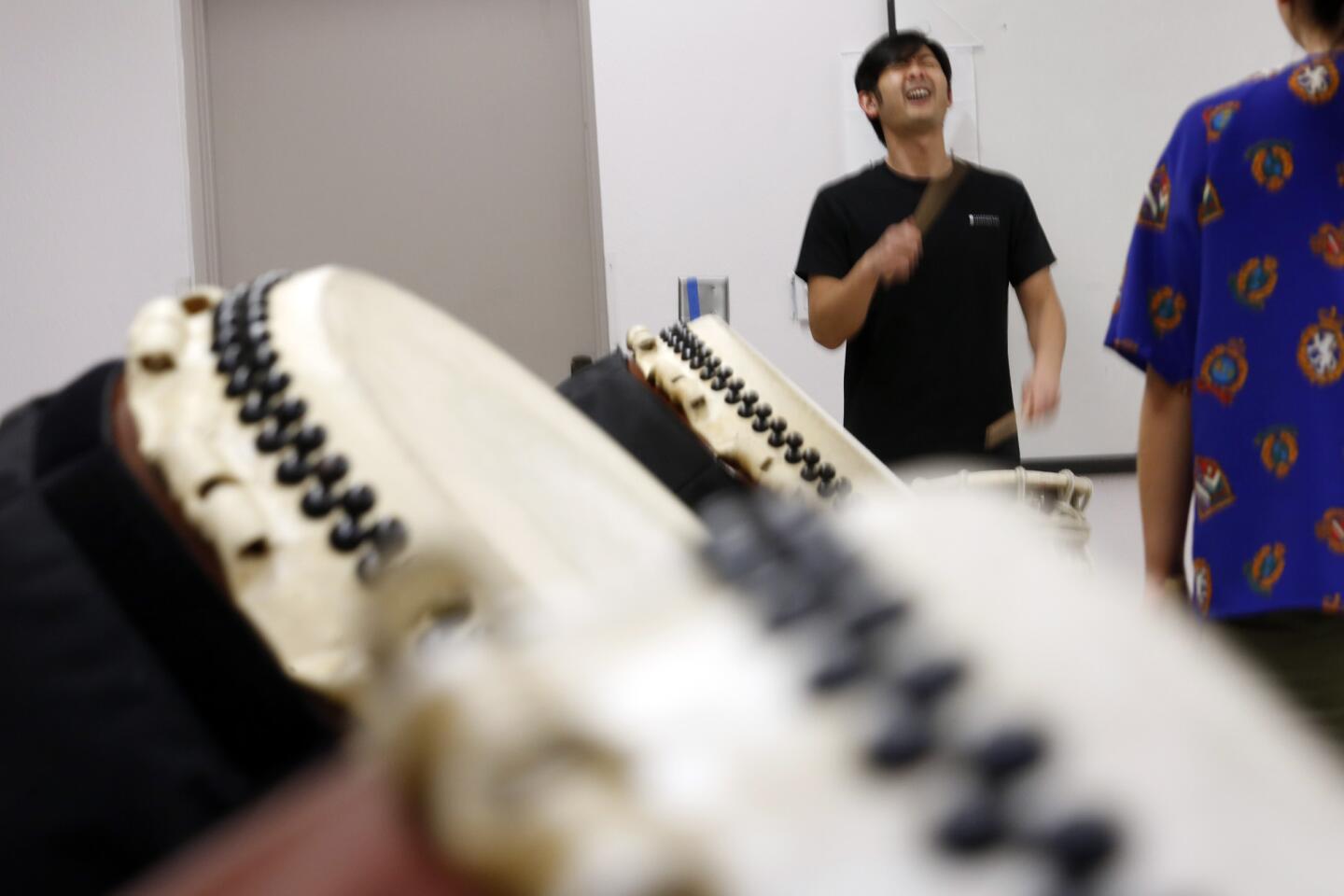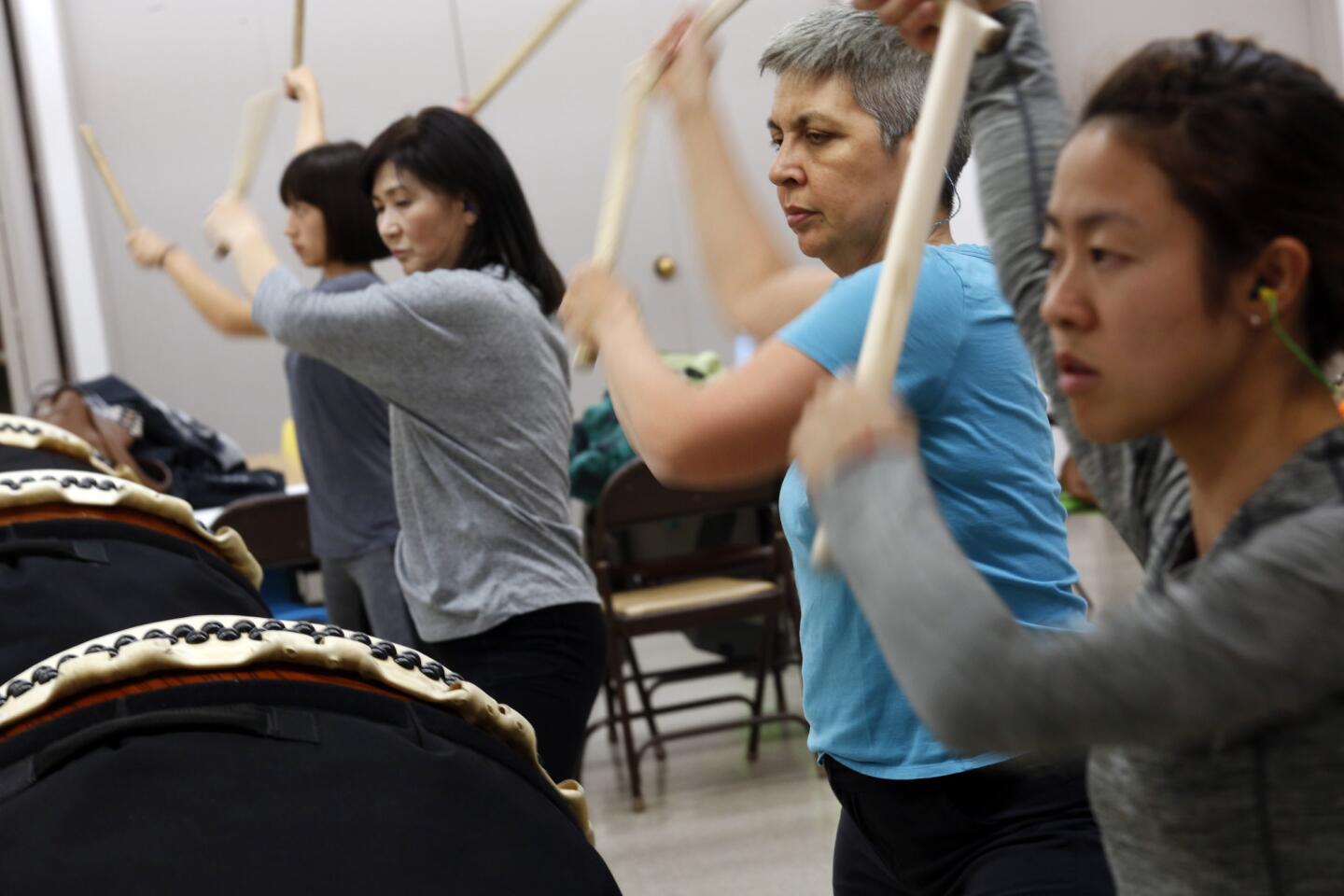The best workout you’re not doing: Taiko drumming
I took up Japanese taiko drumming because it looked fierce. Legs are planted wide as arms wield bachi drumsticks in broad arcs, striking barrel drums in communal precision.
Everyone wears a scowl that borders on delight.
For me, taiko felt like a way to express aggression in a productive way –– in a world that increasingly lacks such outlets.
I discovered that psychological benefit, along with other health rewards, in a 12-week class held by TaikoProject in downtown Los Angeles.
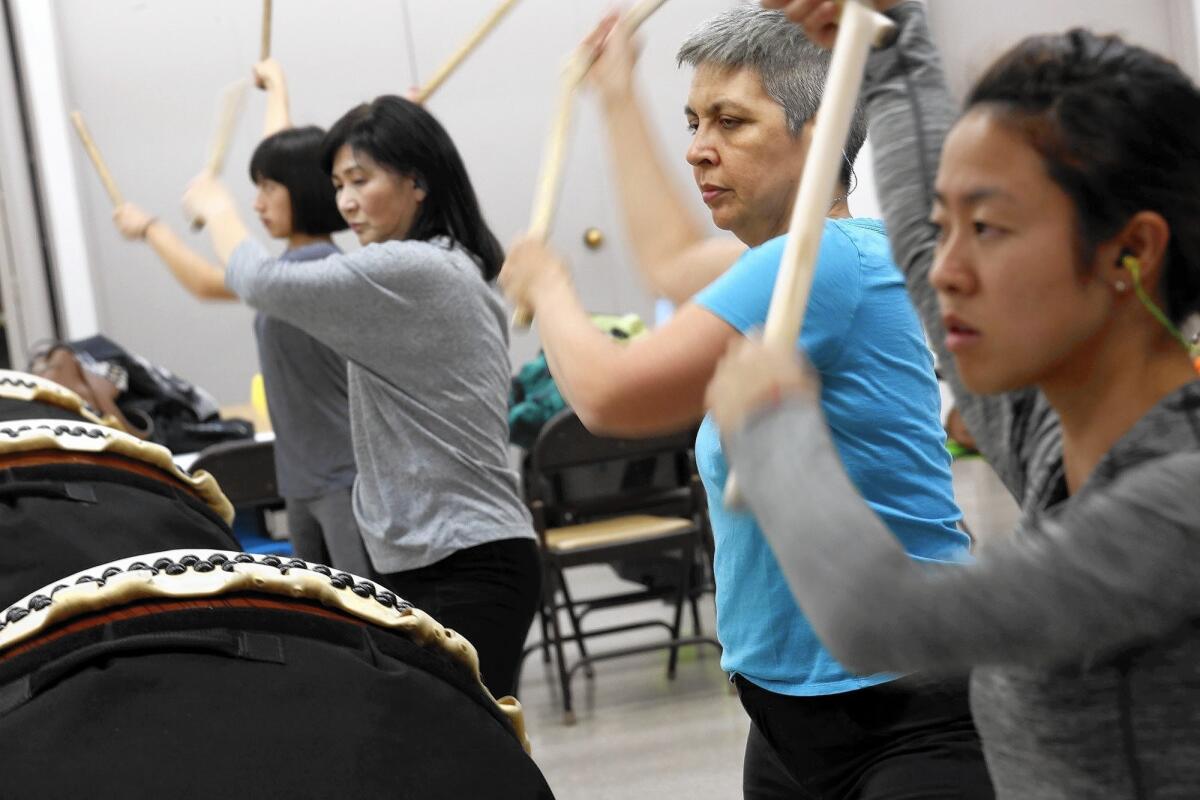
Taiko originated in feudal Japan partly as a way to inspire troops, synchronize marches and terrorize enemies. Today’s taiko ensembles, called kumi-daiko, were developed in Japan in the early 1950s and were brought to the U.S. in the late 1960s.
“What attracts most people to taiko is the reverberation –– so deep and thunderous,” said TaikoProject’s Artistic Director Masato Baba. “It hits them right in the gut, the heart.”
Here’s how taiko drumming can help you sharpen up, inside and out:
Excellent cardio workout
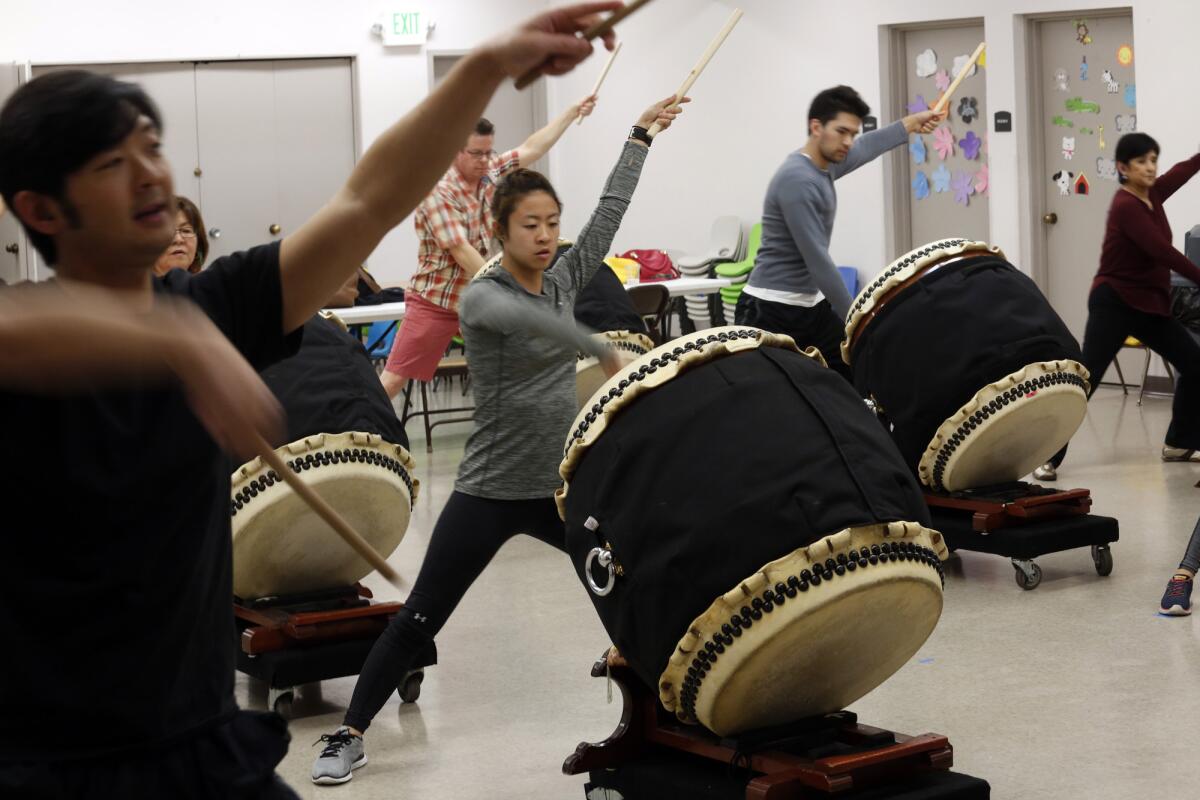
Taiko is good exercise; it offers an excellent cardio workout, builds endurance and employs most joints. Masato Baba, left, leads a TaikoProject drumming class in L.A.’s Little Tokyo.
Taiko begins with the all-important leg stance –– wide and slightly crouched –– what Baba terms a drummer’s “strong roots” that enable the expansive arm strikes. Core strength, in Japanese called hara (the stomach region), is emphasized. To master correct form, the exacting strikes are first broken down into four movements.
We played on chu-daiko drums, placed at 45-degree angles, and in the naname or “slant” style, with the body beside the drum. I soon learned that taiko is a meticulous, highly systematic art form, and yet the body must be kept loose to engage with the rhythmic flow, the communal beat.
Taiko offers an excellent cardio workout, builds endurance and employs most joints. After increasingly accelerated rounds of a four-part kata drill, our group of 10 was exhausted.
Builds mental stamina

Julia Hawkinson, from left, Susy Woo, Mariko Nishizu and Sally Kikuchi participate in a TaikoProject drumming class.
There’s plenty to keep track of when playing taiko: correct form; knowing taiko’s oral musical notation, called kuchi shoga; recalling memorized beat patterns; counting rhythms; keeping time with the foundational beat set by the leader, called jiuchi or ji; sounding out kiai, the spirited vocalizations (aiyah!) used to energize the group; and syncing with everyone, among other details.
In short, you have to be sharp to play taiko.
Taiko also improves coordination and dexterity. As the class progressed, we added stylized arm movements (circles and pointing) as opposite arms struck drums. The interlocking patterns (a different rhythmic movement for each arm) that TaikoProject performs can grow complex. The group, founded in 2000, is known for pushing taiko’s traditional bounds.
Emotional and psychological benefits
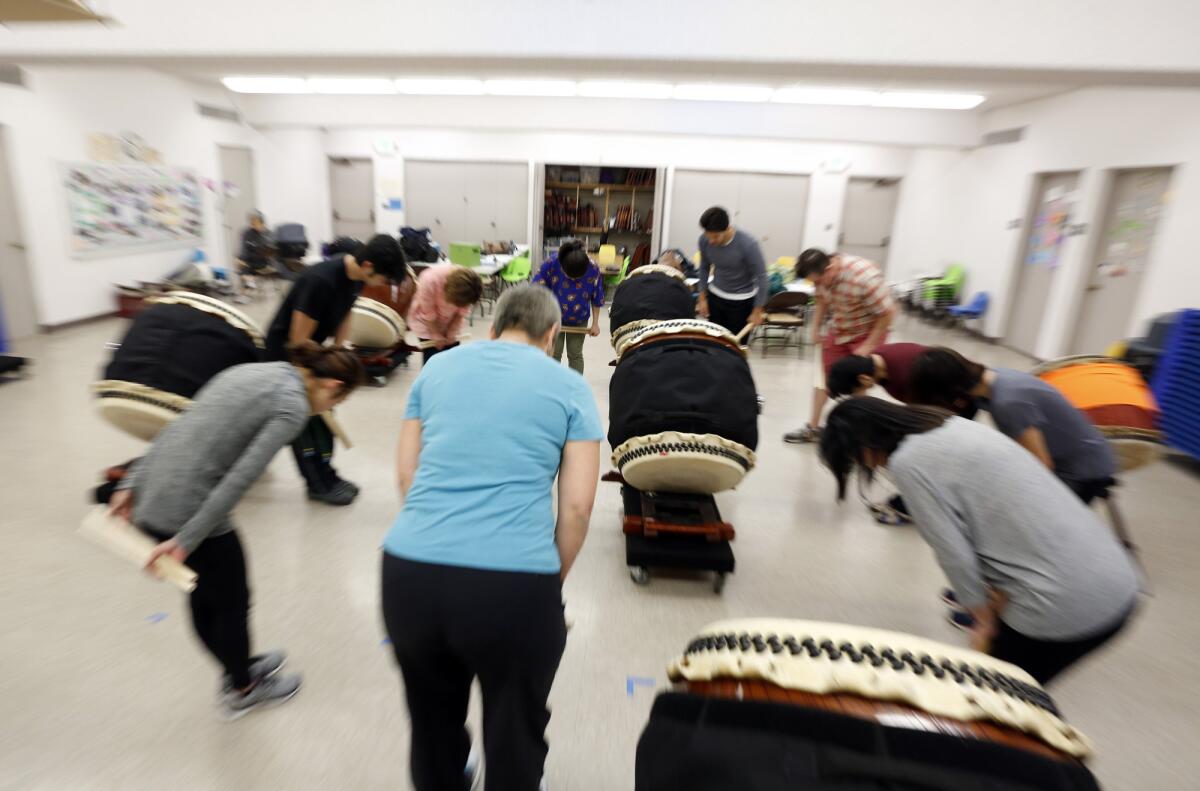
Participants bow at the end of a TaikoProject drumming class.
The sense of congruity with others that taiko offers is inescapable. Playing in rhythmic union naturally creates a sense of belonging and community. The perhaps overused trope of “becoming one” with others actually happens when playing in a taiko ensemble. Sometimes I would forget to count the rhythms because I had begun to feel them, incorporate them.
Taiko demands that you blend with others in a tenacious, beat-by-beat manner. At times, you quite literally forget yourself.
Spiritual teachers stress the importance of mindfulness and what has become the trendy Art of the Now. Perhaps then the simplest way to be present is this:
Go beat a drum with others. And don’t forget your earplugs.
TaikoProject offers 12-week classes for beginner and intermediate students, as well as for children: taikoproject.com
